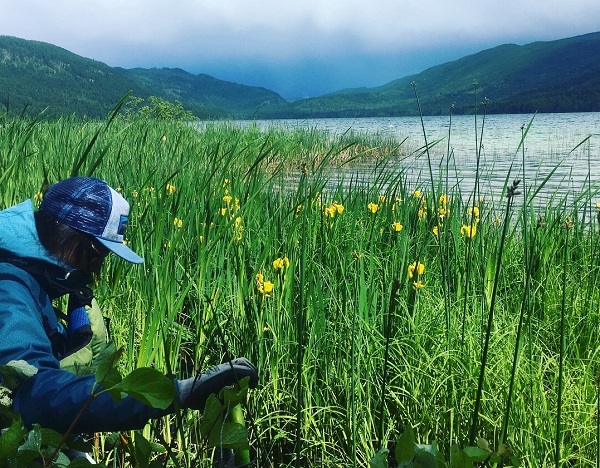
Yellow Flag Iris Removal in BC’s Shuswap Watershed
 Native to Europe, North Africa and the Mediterranean, Yellow flag Iris an invasive species known for its destructive impacts on wetland habitats. It poses a significant threat to these ecosystems within BC’s Shuswap Watershed.
Native to Europe, North Africa and the Mediterranean, Yellow flag Iris an invasive species known for its destructive impacts on wetland habitats. It poses a significant threat to these ecosystems within BC’s Shuswap Watershed.
Last summer, the Columbia Shuswap Invasive Species Society (CSISS), along with several other groups and volunteers, worked collaboratively to manage the spread of the species through education, community engagement and site-rehabilitation. Supported by funding from the Habitat Conservation Trust Foundation’s Public Conservation Assistant Fund (PCAF), the groups focused their restoration efforts on the White lake and Little White lake wetland ecosystems.
“The project aims to implement full-site treatment of Yellow Flag Iris using benthic barriers, digging, and deadheading before seed set,” says Laura Gaster, CSISS Field Operations Program Coordinator. “Rehabilitation with native cattails and continued community engagement will be completed in addition to site monitoring in future years.”
Yellow Flag Iris reproduces rapidly and forms dense monocultures, preventing wildlife from reaching the shore to nest. Native cattails, rushes and sedges that provide valuable habitat and easy access to the shore for wetland wildlife, such as ducks and Western Painted Turtles, are replaced with thick barriers of Yellow Flag Iris. Floating seeds and rhizomes (root fragments) are easily transported downstream, establishing new populations and making mechanical removal of the entire plant challenging.
One way to combat the prolific nature of this plant is to install a benthic barrier—a non-permeable material such as pond liner—on sites where Yellow Flag Iris removal has taken place. This suppresses the regrowth of the plant from any remaining rhizomes and also causes the plant to respire without photosynthesis, exhausting the plant’s energy reserves.
During restoration efforts last June, a whopping 2,440 kilograms of Yellow Flag Iris was removed, but more restoration work will surely be required in subsequent years. “Monitoring and further treatment is recommended for future years, and as with most invasive species, especially aquatic and riparian plants, eradication is a multi-year effort,” explained Gaster.
For more information on how to combat this invasive species, visit the Yellow Flag Iris section on the CSISS website.

